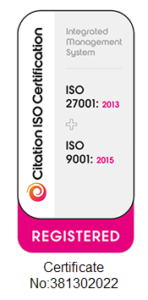Going from Indifferent to Excellent in the Virtual Events Space
“Excellence is never an accident. It is always the result of high intention, sincere effort, and intelligent execution.” – Aristotle
Over the past year, my colleagues and I at Open Audience have found ourselves busier than ever as we have leveraged our collective skills and successfully pivoted to virtual events. The trust we’ve garnered can be attributed to the fact that we understand the complexities of virtual, and that the skills needed to put on a good virtual event are not the same as those required for a physical event. As a result, we have been able to take poor or indifferent experiences and turn them into excellent, engaging sessions for our clients and their audiences.
While many thought a switch to virtual would be easy, that’s not the case. My experience is that virtual is more challenging simply because you have less control than you do in live meetings. Imagine, for example, a panel of four people brought together to discuss approaches to treating heart disease.
There is a PA system in the conference room and each panellist is wearing a microphone. There will be technician in the corner with a sound desk, muting speakers on and off to ensure a smooth session. We can’t really do that in the Zoom world, since one of the limitations of the platforms is that they are primarily designed for the participants to control their mic and camera. Furthermore, it’s much more of a challenge (and potentially far more disruptive) to problem solve remotely during a live session.
What that means is you need to have contingency plans, tech rehearsals, and technology backups, for example if a presenter has internet issues. None of these would normally happen in a physical event, unless it’s something hugely high-profile and tech-focused, such as a keynote speech from Apple. Typically, in the physical world, your panel of four cardiologists will turn up, be mic’d up, be on stage for their presentations and the discussion, then leave. They don’t expect the same level of preparation that is needed for a virtual session.
The Q&A also needs to be managed very differently. Instead of a member of the audience raising their hand to ask a question, in virtual everything has to be funnelled through a moderator, or as we like to use, an audience advocate who can be the voice of the viewers in the presentation.
Tech and time management
There is also a lot less tolerance in virtual for what the audience perceive as technology issues. In a conference room, people will sit and wait or perhaps leave the room temporarily to get a coffee while a problem is being sorted out. With virtual events, there is probably another symposium they could attend, or other work they could be doing, or even just answering emails and surfing the web. In virtual events it’s always about keeping your audience focused, and that is a very different skill set and requires a different level of technology knowledge and competence.
As meeting engagement experts, one observation we have made is that organisers are sometimes not cognisant of the need for breaks and structure. We’ve witnessed events where the organisers think nothing of having their audience sit for three hours, without a break and an opportunity to get away from their screens.
I would argue, however, breaks are even more important in the virtual world than the physical, where people can leave the room temporarily or they might take the opportunity to have a quick, quiet chat with a colleague in the corner of the auditorium. That isn’t possible in virtual, and even the most interesting presentation in the world is going to become tiresome after three hours.
Audience connection with one another is another issue. In most conferences, audiences start to arrive 30 minutes to an hour before the first session for a coffee and a chat with their colleagues. While that isn’t always happening in the virtual space, I do think that in future corporate clients are going to be asking for ways to replicate that experience in some way.
There will also be a push to find ways to emulate that casual chat with the boss at the tea station and other ways of interacting that are important for job recognition. How do organisations manage those interactions now? How does someone who is perhaps less confident at flagging their skill set get noticed? These are discussions my colleagues and I are having.
The fact that Open Audience is platform agnostic – in the sense that we don’t push a particular platform and use several different tools in the same session depending on the need and circumstance – does allow us to test out a variety of ways to address social interactivity in the workplace.
Furthermore, platforms will continue to evolve over the coming years and those chance encounters will likely become easier to replicate in future. Our knowledge of the tools – how to use them, how to adapt them, which capabilities to leverage and when – gives us an advantage, which ultimately benefits our customers.
At the same time, we won’t pretend that there is a virtual solution to every situation. We understand that technology can only take you so far; the human need for person-to-person interaction will always be there. Hybrid events will make that interpersonal contact possible, while also catering for those for whom attending physically isn’t possible.
James Templeman is the Technical Event Director for Open Audience, with an extensive background in the live event streaming and production industry. His expertise spans production management, vision mixing, post-production as well as broadcast camera operation skills. His industry experience includes BBC Worldwide, HSBC and CapGemini, as well as central government departments and broadcasters. His live event experience includes productions at the Royal Albert Hall, Excel London and Earl’s Court.

